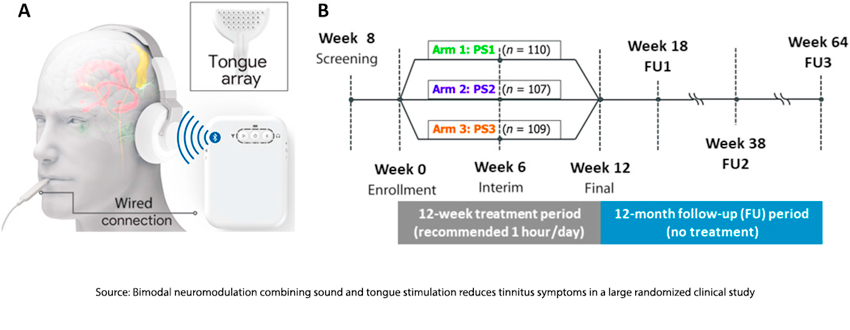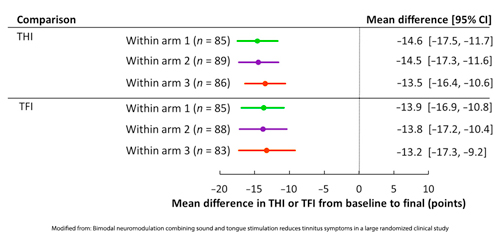Tinnitus is a perceived sound that only you can hear. It might be a ringing, buzz, or tone. It arises not in your ear but in your brain. And because only you can hear it, it is subjective, a symptom, not a sign, so diagnosis can be challenging. It is not life-threatening, but in many instances, it is life-altering and not in the direction of being better. It occurs in more people as we age, and estimates put the population with tinnitus at around 15% - 50 million in the US alone.
Understanding the Cause - The inner ear whispers, a neural rhythm's dance
The exact basis remains poorly understood but involves the ear, brain, and the pathways connecting them and the brain’s projection of those signals as sounds. While tinnitus is a symptom, it is most frequently associated with age-related hearing loss. There are several hypotheses to explain the symptoms. I am offering what I believe is a reasonable narrative.
Damage to the inner ear, our peripheral auditory system, reduces the input of auditory information to our brain. This results in a disruption of baseline, rhythmic neural activity that we perceive as silence. The brain seeks to re-establish or reorganize that baseline, compensating by amplifying other neural pathways that contribute to the persistent perception of sound, even in the absence of external stimuli – a process of neuroplasticity described as central gain. You can find a bit fuller explanation here.
Neuromodulation – Bimodal Magic
Neuromodulation simply refers to ways in which we may alter the activity of our nerves. All of the serotonin uptake inhibitors, SSRIs, used in treating depression are neuromodulators. Another large group of neuromodulators apply electrical stimulation to the nerves. Before your thoughts turn to Galvani and the frog’s leg, the use of electrical stimulation in chronic pain management has been around for a half-century or so. Transcutaneous electric nerve stimulation (TENS) appears to help roughly 30% of patients with chronic pain, and there is evidence that it may promote nerve healing.
With little to offer patients with tinnitus, researchers considered a form of neuromodulation, initially involving sound.
“Animal research and pilot human studies have shown that bimodal neuromodulation combining sound and electrical somatosensory stimulation, including tongue stimulation, can drive extensive plasticity in the auditory system and improve tinnitus symptoms.”
In this study, 330 individuals with tinnitus were randomized to three clinical arms, each utilizing a neuromodulation device that played varying tone sequences to the individual and, at the same time, provided mild electrical stimulation to the tongue. Why both? Because, for whatever reason, the two stimuli had an additive effect.

The participants were very compliant with the treatment involving listening to those tones daily for 12 weeks. While the researchers considered multiple auditory outcomes, the ones of interest to us are the Tinnitus Handicap Index, THI, and the Tinnitus Functional Index, TFI.
THI and TFI, the metrics of the study
There are no biomarkers for tinnitus, and the THI and TFI are the most widely used surveys. THI measures tinnitus severity along functional, emotional, and catastrophic scales. TFI is a more focused consideration of  function and quality of life. [1] Both are considered reasonable measures of tinnitus and are reported on a scale from 1 to 100 (the most severe). The participants in the study had baseline scores in the mid-40s, putting them in the “moderate” range. The final results, at one year, nearly nine months after completing therapy, showed a significant improvement in both THI and TFI, now placing most of these participants in the mild group.
function and quality of life. [1] Both are considered reasonable measures of tinnitus and are reported on a scale from 1 to 100 (the most severe). The participants in the study had baseline scores in the mid-40s, putting them in the “moderate” range. The final results, at one year, nearly nine months after completing therapy, showed a significant improvement in both THI and TFI, now placing most of these participants in the mild group.
This study was repeated with a slightly larger group, and the tone patterns were altered. Additionally, the researchers found that changing the individual tone patterns at the mid-point in therapy, six weeks, further improved the benefit. Once again, this dual neuromodulation reduced THI scores in 91% of the patients completing treatment by an average of 20 points, moving them from moderate to mild symptoms. These studies reported in Nature Scientific Reports are the basis for the FDA approval of the first device specifically for treating tinnitus.
For those afflicted with tinnitus, this study's dual approach involving sound and tongue-stimulating electric shocks is hitting the right notes, reducing symptoms for most participants. So, the next time you hear that internal concert, consider neuromodulation. A little electric shock and tone therapy can reduce the tinnitus volume and restore your life to a more harmonious melody.
[1] There are “eight subscales (factors): intrusiveness, sense of control, cognition, sleep, auditory, relaxation, quality of life, and emotional distress.”
Source: Bimodal neuromodulation combining sound and tongue stimulation reduces tinnitus symptoms in a large randomized clinical study Science Translational Medicine DOI: 10.1126/scitranslmed.abb2830
Different bimodal neuromodulation settings reduce tinnitus symptoms in a large randomized trial Nature Scientific Reports DOI: 10.1038/s41598-022-13875-x




